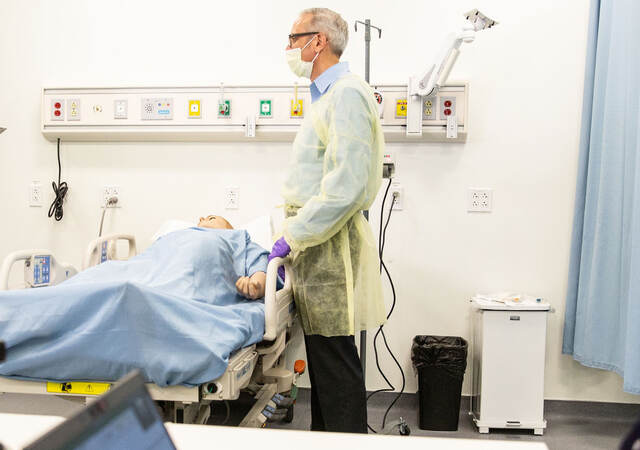April 18, 2023
By Lisanne de Vogel and Tamara Will
Consider the following scenario you might have encountered during usability testing: After a participant has performed some tasks, you ask them questions to determine whether there was anything confusing or unclear about the device, interface, or instructions. You are trying to determine whether there was something that distracted them from the features that were relevant to complete the task or from important safety information. Unfortunately, the participant cannot remember what they were looking at or what attracted their attention. As usability/human factors (HF) experts, we can typically determine which aspects might have impacted a participant, but can we be sure? And what else might we learn if we could see the product through the user’s eyes?
Eye tracking is used in many fields of research and can generate interesting insights into people’s cognitive and physiological processes, such as attention and arousal. As HF research and design focuses on optimizing the interactions between people and products, use of eye tracking technology can support the goal of making products safe, effective, and satisfying to use. In Emergo’s case, we can leverage eye tracking to generate interesting insights into a user’s interactions with a medical device and its labeling.
Eye tracking and human factors research
First, let’s define eye tracking. Eye tracking is a relatively non-invasive research tool that is used to obtain objective data on people’s eye behavior. Eye tracking technologies include screen- or desk- mounted trackers as well as wearable eye tracking glasses.
Eye tracking can be used in human factors and usability research as a tool to link eye movements to the user’s behavior. However, whether eye tracking will bring additional insights depends on the research goal. Eye tracking is very suited for research questions, such as:
-
What information (e.g., warnings and cautions) do users see – and not see – in an IFU?
-
Which elements attract attention when a user is differentiating between different products?
-
How do users navigate through an IFU or software product?
Additionally, eye tracking can also be useful during later development stages and provide support/insights for determining root causes of use errors by determining (e.g., fixation) what people focused their attention on. These insights can either come from interpreting the eye tracking data independently, or from reviewing the eye tracking video together with the participant to help spark their memory when recalling certain events. As you can see, there are many types of questions you can answer, and it is important to consider upfront how you want to gather this data.
Eye tracking data
Eye tracking data can be largely divided into three categories: gaze, fixation, and saccades (or “gaze patterns”). Gaze is what a person is looking at, fixation describes how long a person’s attention is spent looking at a particular spot, and saccades are the eyes’ movements between fixation points, uncovering a gaze pattern.
After collecting the eye tracking data, various software programs provide numerous opportunities for (visually appealing) analyses. Different research questions call for different types of research methods and will generate different types of data, providing different approaches to data analysis. For example, if you are evaluating an IFU you might interested in data on gaze and fixation (e.g., where did participants look, in which order, and for how long). This could be analyzed and visualized through a heatmap or a gaze plot. On heatmaps, the areas shown in red are the areas participants looked at the longest. Gaze plots depict the location, order and time spent in certain areas, which can help determine which items were distracting and which areas received the most attention.
In addition to the heatmaps and gaze plots above, there are many other analytical tools to visualize your eye tracking data such as opacity mapping and perception mapping (visualizing only what users saw), correlations between objects (when users often look back and forth between objects), and areas-of-interest-based coding (to analyze eye tracking metrics per dedicated segment of interest), etc.
What’s next?
Although eye tracking data tells you what users are and, sometimes even more importantly, what users are not looking at, eye tracking data alone might not answer all the questions of why people behave the way they do and what their experiences and opinions are. As such, combined with more “classical” established qualitative human factors research methods, such as conducting user interviews or doing root cause analysis on observed usability findings, eye tracking can be a valuable and promising psychometric tool to help drive medical device engineering.
Are you interested in learning more about how Emergo by UL can use eye tracking to support your human factors research and design needs? Please get in touch with our Human Factors Research & Design sales personnel for additional information.
Lisanne de Vogel and Tamara Will are Managing Human Factors Specialists at Emergo by UL's Human Factors Research & Design division.
Request more information from our specialists
Thanks for your interest in our products and services. Let's collect some information so we can connect you with the right person.





